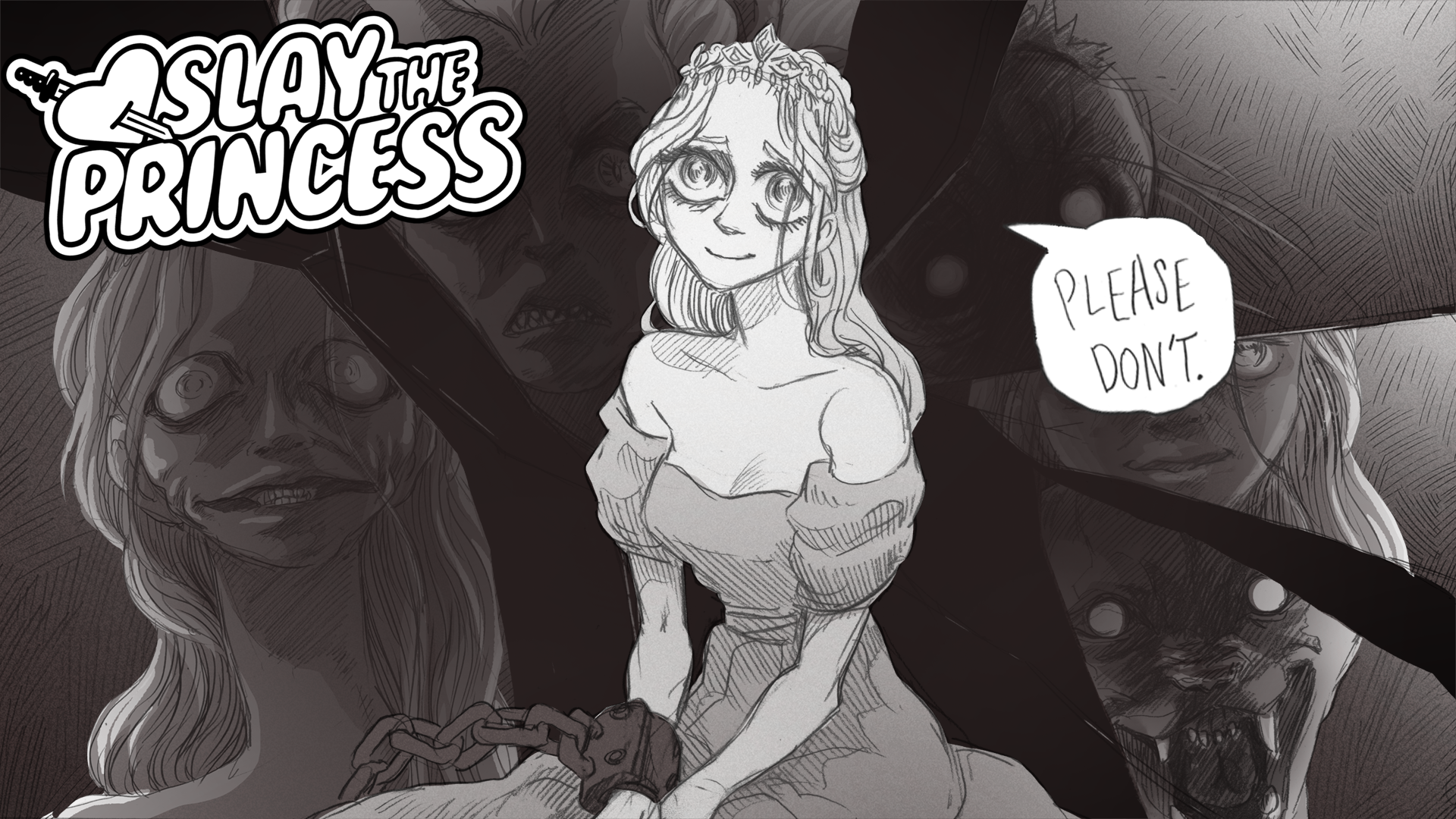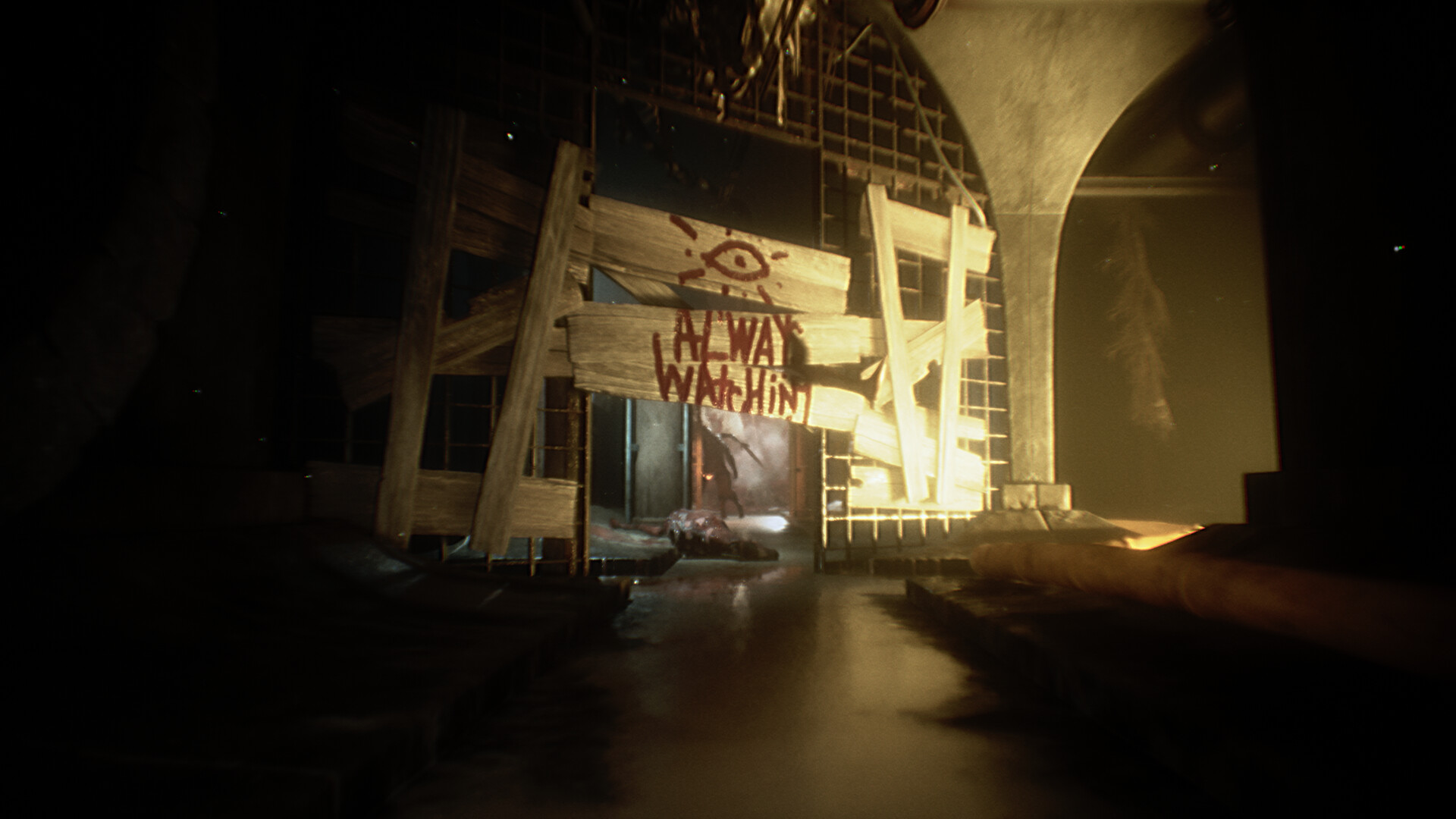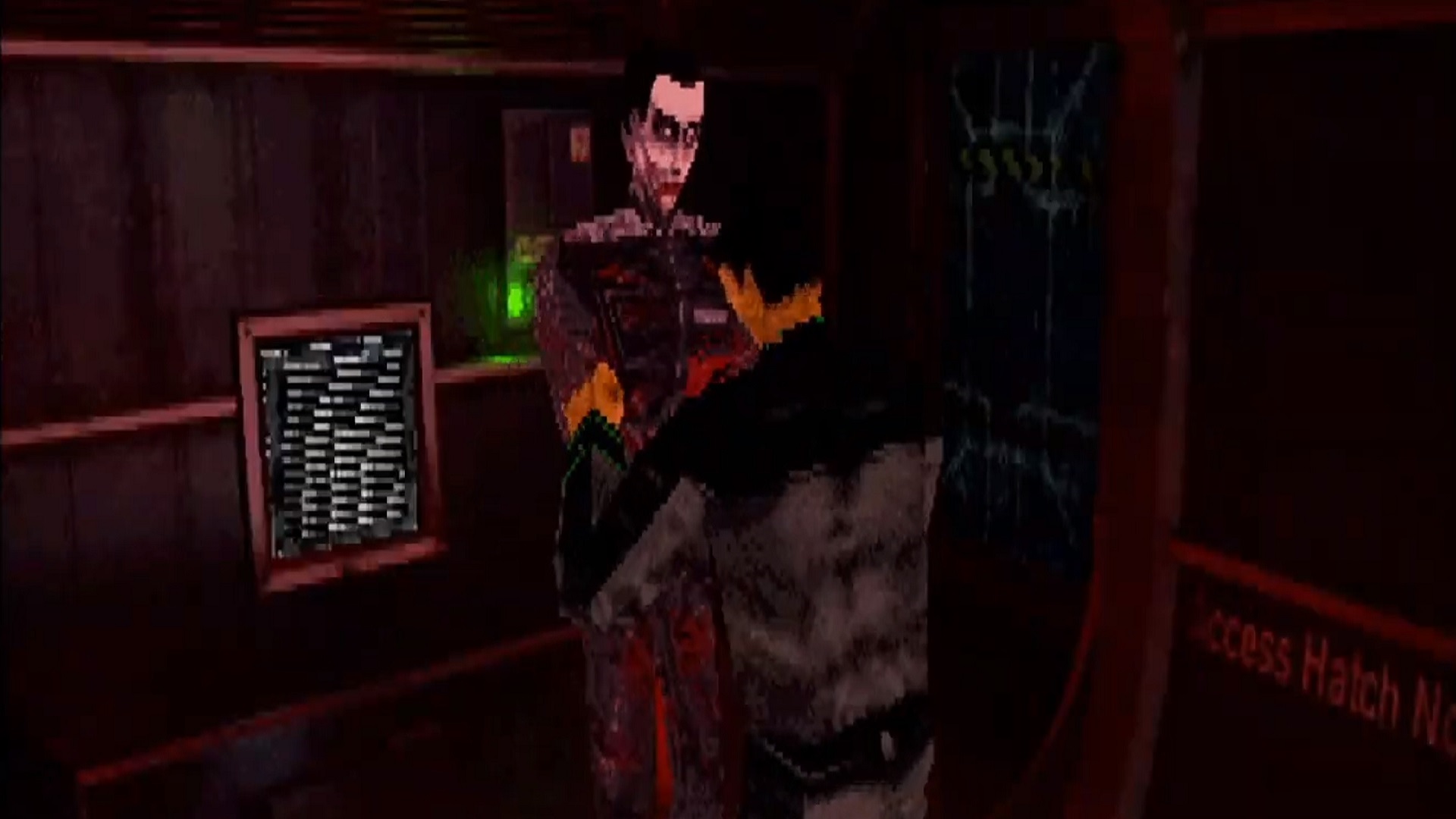
Scarlet Hollow Review – Tim Burton Meets Gravity Falls Meets Silent Hill
Developed and Published by Black Tabby Games
Available on PC through Steam
Free to Play
Scarlet Hollow immediately pulled me into its world by throwing me into a situation that I, among many others as I can imagine, have found myself in plenty of times: stuck listening to the bizarre anecdotes of a stranger on public transportation. When the game starts, you find yourself in a primarily monochrome world with crimson shades and hues as accents, gorgeously designed in a way that calls back to the likes of Tim Burton. Jagged scrawls outline the shadows on the bus where you’ve jolted awake in a daze. The eccentric, beanie-wearing man next to you continues to pelt you with tales of his past, pivoting past your attempts to shut down the conversation (if you try to), before suddenly getting bug-eyed and asking, “You ever just get so mad you just wanna like, KILL someone?!”
The sudden shift in his tone is tremendously eerie, and shortly after, he offers you a dripping bag of boiled peanuts before disembarking and wishing you well on your journey to Scarlet Hollow. Though I had just selected the dialogue option moments before asking what the hell was wrong with the weird guy moments before, I chose to accept the boiled peanuts from him, because why not? This interaction sets the tone of the game very well.

Scarlet Hollow lands in the very precise, sweet spot of horror and humor. It demonstrates a keen sense of self-awareness, knowing when to crack jokes about the bizarre characters and interactions that the player encounters, while also maintaining the ever-present possibility of a sudden shift to chilling eeriness, like the bug-eyed stranger casually slipping his casual desire to murder people into conversation. This tone kept me engaged from the beginning of the episode to the very end.
Upon arriving in the town of Scarlet Hollow, you’re greeted by the stoic, if not abrasive, cousin Tabitha. You learn that you have arrived in town for the funeral of her recently deceased mother—your aunt. As you make your way to Tabitha’s home, you’re given the option to explore varying dialogue branches to get to know her better. This is one of the first instances where an important gameplay element presents itself: the player’s selected character traits.

At the beginning of the game, players enter their name, hometown, preferred pronouns, and are prompted to select two of six traits. These traits are often used to unlock additional paths, unique dialogue, and sometimes, helpful hints to players. You can choose to be “Mystical” and “Hot”, “Book Smart” and “Street Wise”, “Powerful Build” with a “Keen Eye”, or any other combination of the six that you can think of.
With the “Street Smart” trait, my ability to lie to other characters was bolstered. This enabled me to score brownie points with Tabitha by lying to her about how gorgeous her dilapidated house is. With the “Keen Eye” trait, the narration would often relay certain tidbits of information to me, such as peculiar objects and details that I came across in the house that seemed to tell me more about the history of Tabitha’s family.

As I explored the looming hallways of Tabitha’s house, and investigated the room that I would be staying in, I was enamored with how well the elements of the game meshed to create a cohesive environment. The floorboards creak as you advance through each room. Tabitha’s cat Frou Frou growls as you approach her spot. The crinkly sound of leaves in the wind echo as you walk outside and examine the garden, watching the tree branches actively shake in the background. For a point-and-click text-based adventure, there is an impressive feeling of movement, action, and three-dimensional space.
In fact, in many instances, characters will directly interact with the backgrounds of the scenes. The upbeat, cryptic obsessed YouTuber, Stella, chases after her dog when you enter town, and you watch as she appears in the background and actively makes her way toward you frame-by-frame. Later in the woods, she will illuminate dark spots in the woods and the background with her flashlight, revealing what lurks behind it to both she and the player at the same time.

Scarlett Hollow is very effective at really placing the player right into the narrative this way without feeling entirely like you’re just reading scrolling text boxes. It’s successful in establishing a sense of depth in the sense that the player is actively experiencing what is being described. While I still felt like it was leaving some elements to the imagination, I was surprised, amused, and frightened at times at how much I felt like I was personally experiencing what was presently happening in the game that wasn’t limited to the textual descriptions. When a bloody, ghoulish figure appeared in the fog at one point whispering my name as it stared me down, I couldn’t help but think, “Okay, where’s the option for ‘Get the hell out of there!?'”
Speaking on the technical elements of the game, there is a convenient tool that allows players to look back on previous text that they may have skipped accidentally, or want to reread. There is also always an option to save the game, with plenty of file slots available. My only wish is that there was an inventory feature that reflected what items that the player currently had on hand—I was only reminded of the fact that I still had the boiled peanuts from the stranger on the bus when I was given the option to offer them to each new character that I met (which made me laugh out loud at times watching the characters’ reactions).

In addition to how the gameplay kept me invested, the fast-paced plot-development, and multi-dimensional characters had me genuinely interested in what was going to happen next, and how my choices would impact it. I was so invested in my decisions that at one point, when Stella offered me some snacks while hiking, I seriously had to consider: do I take the dried apricots, or the trail-mix? And what impact will that have?
That’s not to say that every single choice will significantly impact the trajectory of each playthrough, but that information gained from each interaction seemed precious and relevant enough that each dialogue choice does seem to carry some weight. With that also comes immense replay value, since different traits lead to unique dialogue branches, and different avenues.
By the end of the episode, I was captivated by the spooky charm of Scarlet Hollow and its eccentric inhabitants. The scene had been set, and without getting into spoilers, a tragedy has occurred and it’s clear that something paranormal has descended upon the town. With the dripping bag of peanuts in hand that I accepted from the bug-eyed weirdo on the bus, I’m eager to see what happens next.
If you want to check it out yourself for the low-low price of Free, click the link here!




